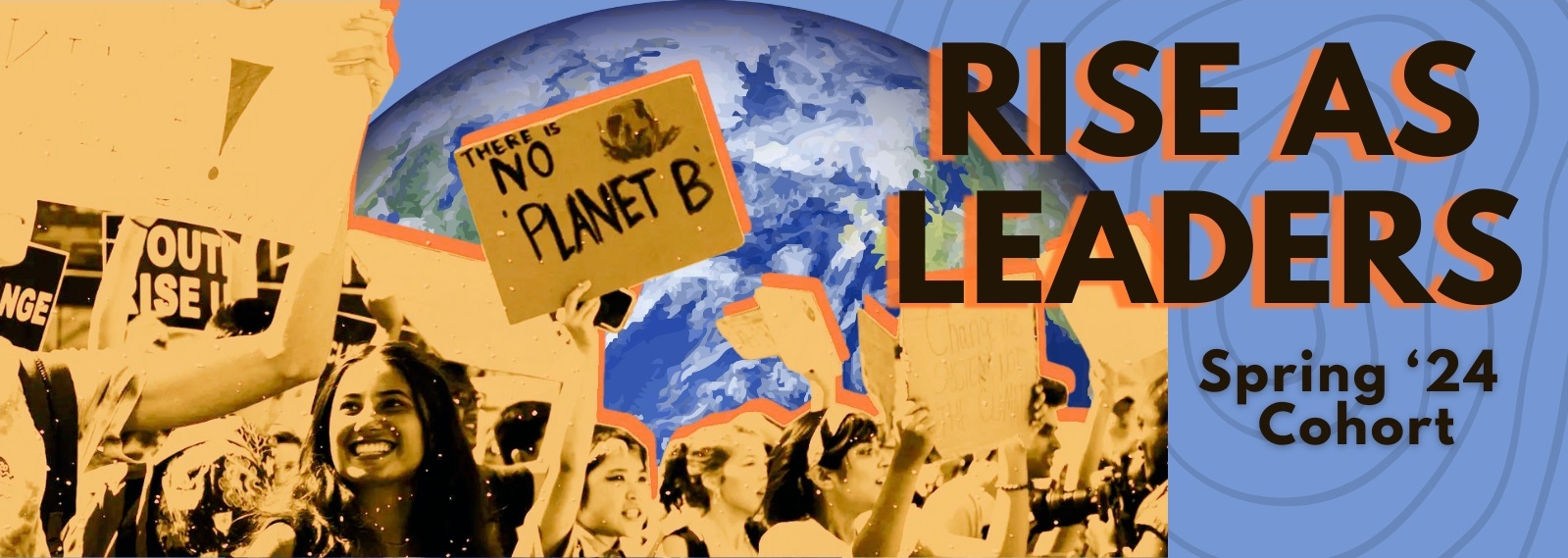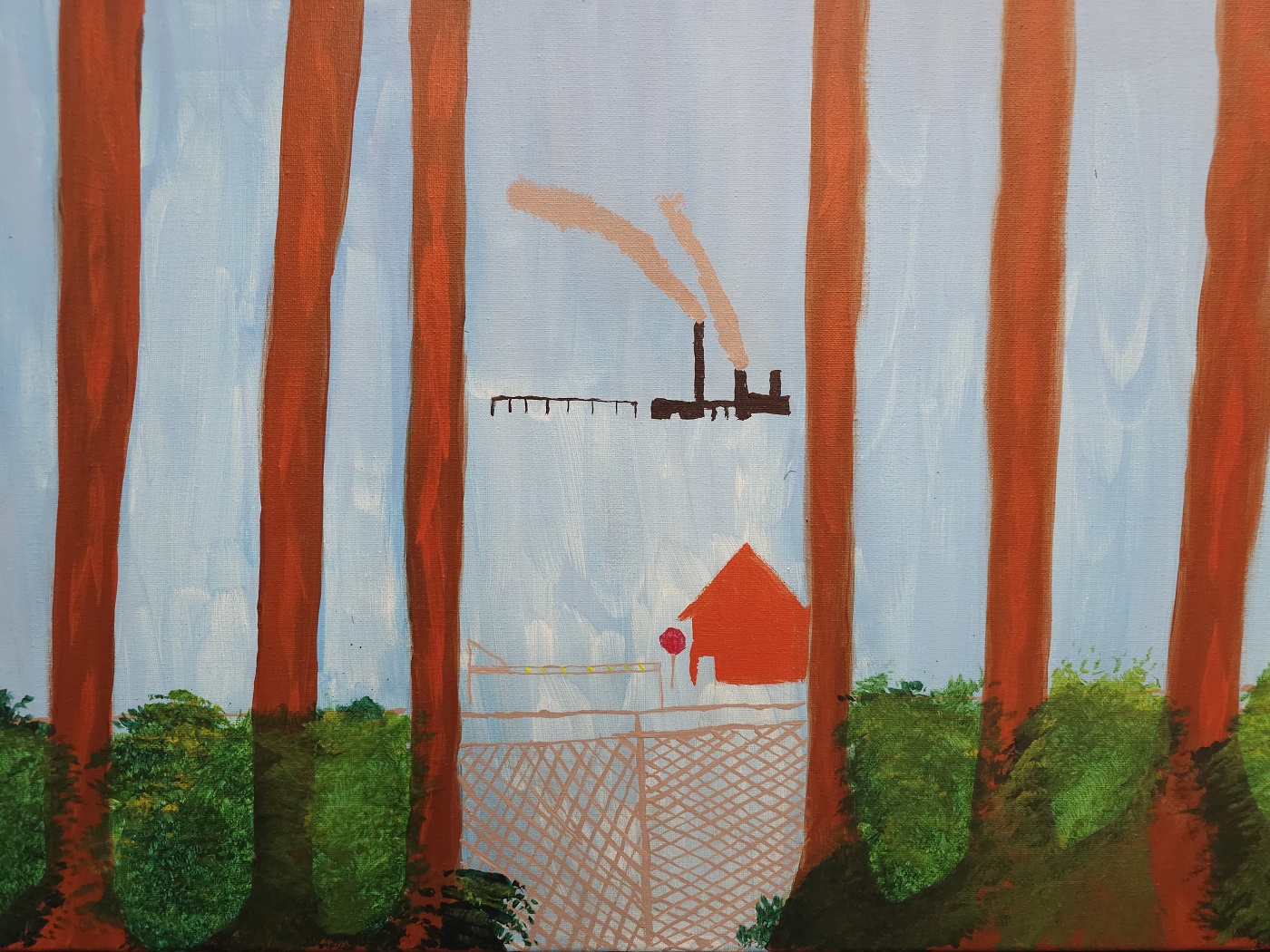Youth Corner
Projects and initiatives by and for Oregon youth
April 25th Hult Center Event
Join Beyond Toxics in welcoming students from Kalapuya High School at the Hult Center on Thursday, April 25 for an art display of their Data Grafiti projects! Artwork will be on display in the lobby ahead of the Changemaker Speaker Series. Doors open at 6pm and tickets are available at hultcenter.org.
Listen to the just released podcast: "Community Conversation Podcast: Environmental Pollution on Your Doorstep" - March 25, 2024
In this podcast episode, two local changemakers Arjoire Arberry-Baribeault with Beyond Toxics and Kelly Ferguson, science teacher with Kalapuya High School were interviewed about environmental pollution and the impact on the community of West Eugene. You will hear how Beyond Toxics partnered with Kalapuya High School to take positive actions towards sharing out information and processing trauma through the power of ART! Trigger Warning: Childhood Cancer will be discussed in this podcast.
See also: Designing Local, Case-Based Environmental Justice High School Lessons Toward More Just and Sustainable Futures - Sarah Stapleton, Kelly Feguson, Katie Jacobson and Lisa Arkin
Rise as Leaders Spring 2024 EJ Leadership Training
Registration is now open!
DATES: April 6th - May 18th, 2024 10am - 12pm Every Saturday
LOCATION: Beyond Toxics office: 120 Shelton McMurphey Blvd., #280, Eugene
Are you a BIPOC high school or college student who wants to become more involved in community organizing?
This 7-week workshop is a space for students of color to explore leadership opportunities within the fight for environmental justice. The program will be held at the Beyond Toxics office in the Eugene/Springfield area.We will also volunteer at a community garden, create a collaborative art piece with a local artist and learn from community partners! Participants will receive a $400 stipend amount.
Project One: Data Graffiti
Launch: January 2024
Thank you to all who attended the First Friday Art Walk this January! Spark on 7th graciously hosted and showcased students' innovative artwork. Together with Beyond Toxics, Kalapuya High School students created an immersive art experience to spread awareness on the local environmental problems in their daily lives.
Over a hundred visitors saw their incredible work and had the opportunity to speak with five of the artists.. Many people were unaware of the environmental issues going on in West Eugene, and students were able to display this information in a meaningful and engaging way.
A note from their teacher: It is never easy learning that the place you live in is polluted with toxins. But when empowered with information; the science behind how we are exposed to industrial pollutants and our fundamental right to know about it, and by expressing their feelings through art, students are motivated to be a source of hope and for change in their community. I am so proud of their bravery in facing these challenges. ~ Kelly Ferguson, Kalapuya High School instructor
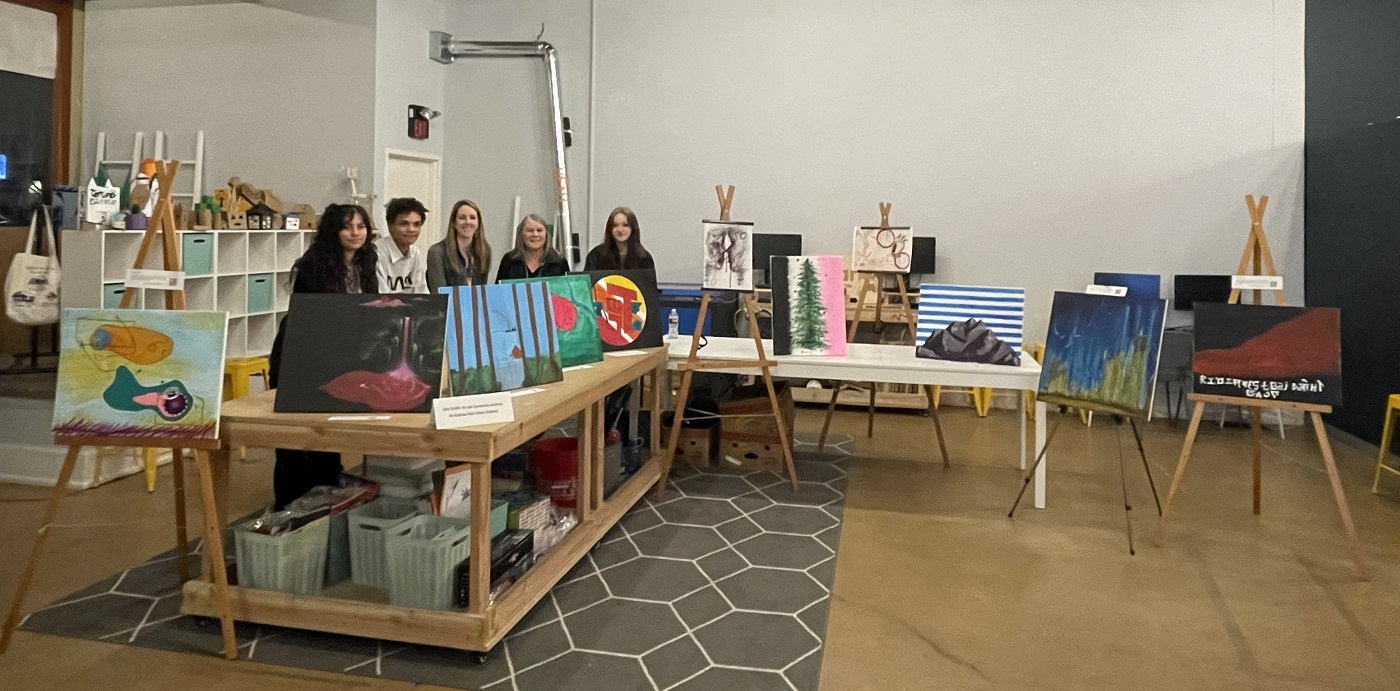
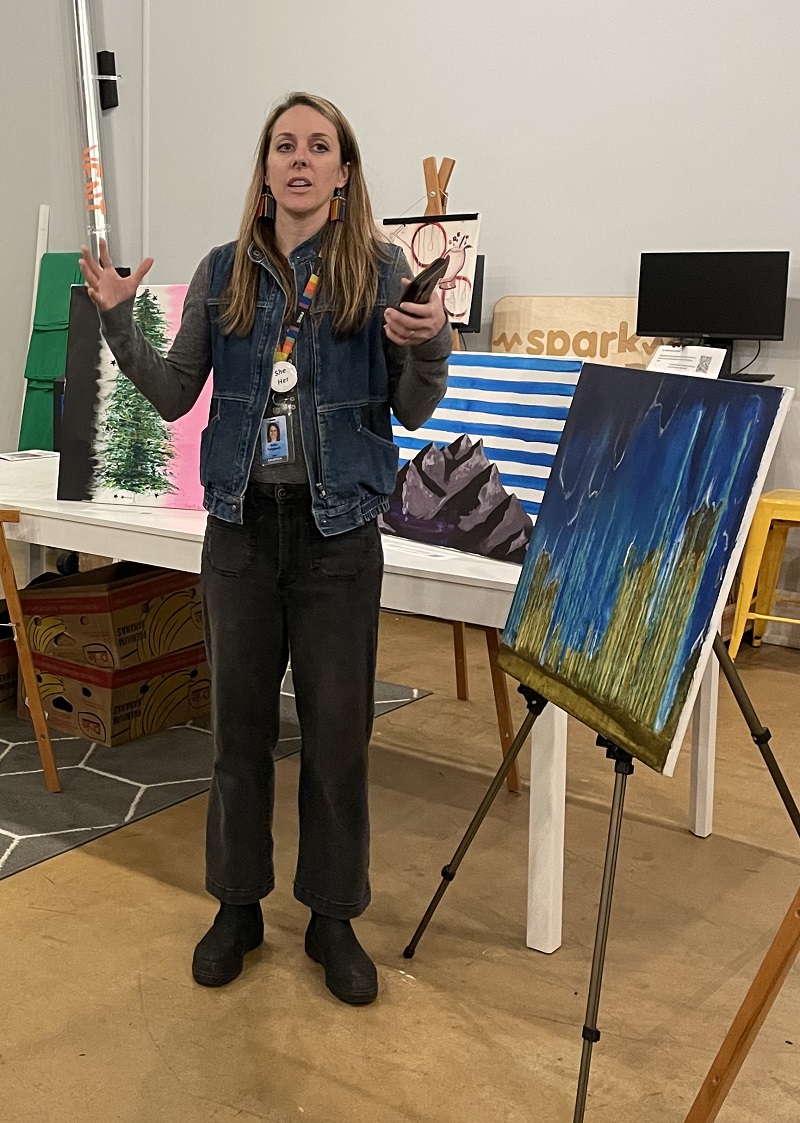
Kelly Ferguson,
Kalapuya High School instructor
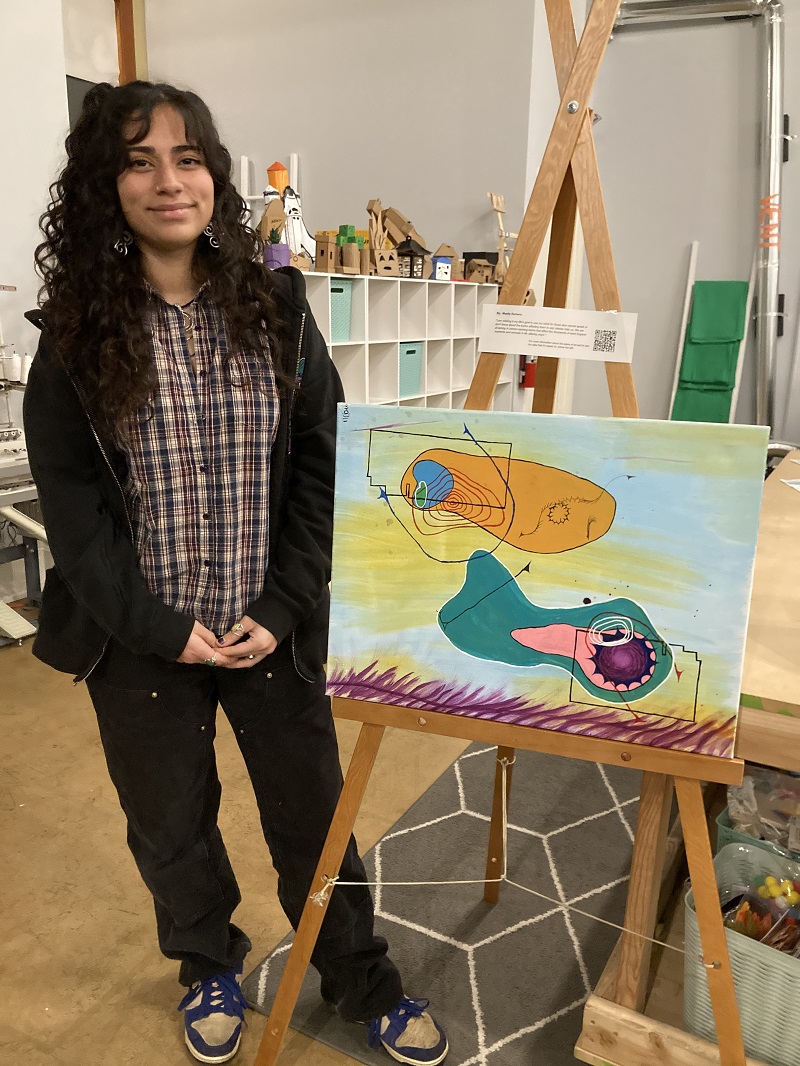
Meztly, student
@ Kalapuya High School
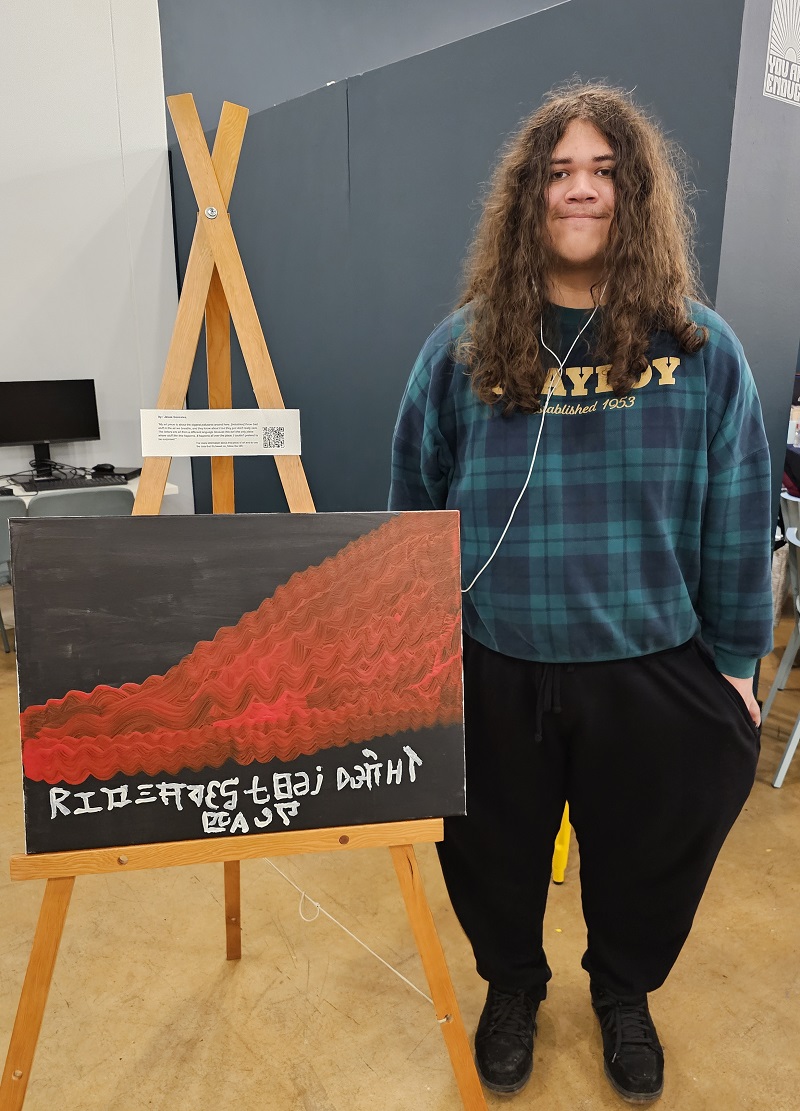
Jesus, student
@ Kalapuya High School
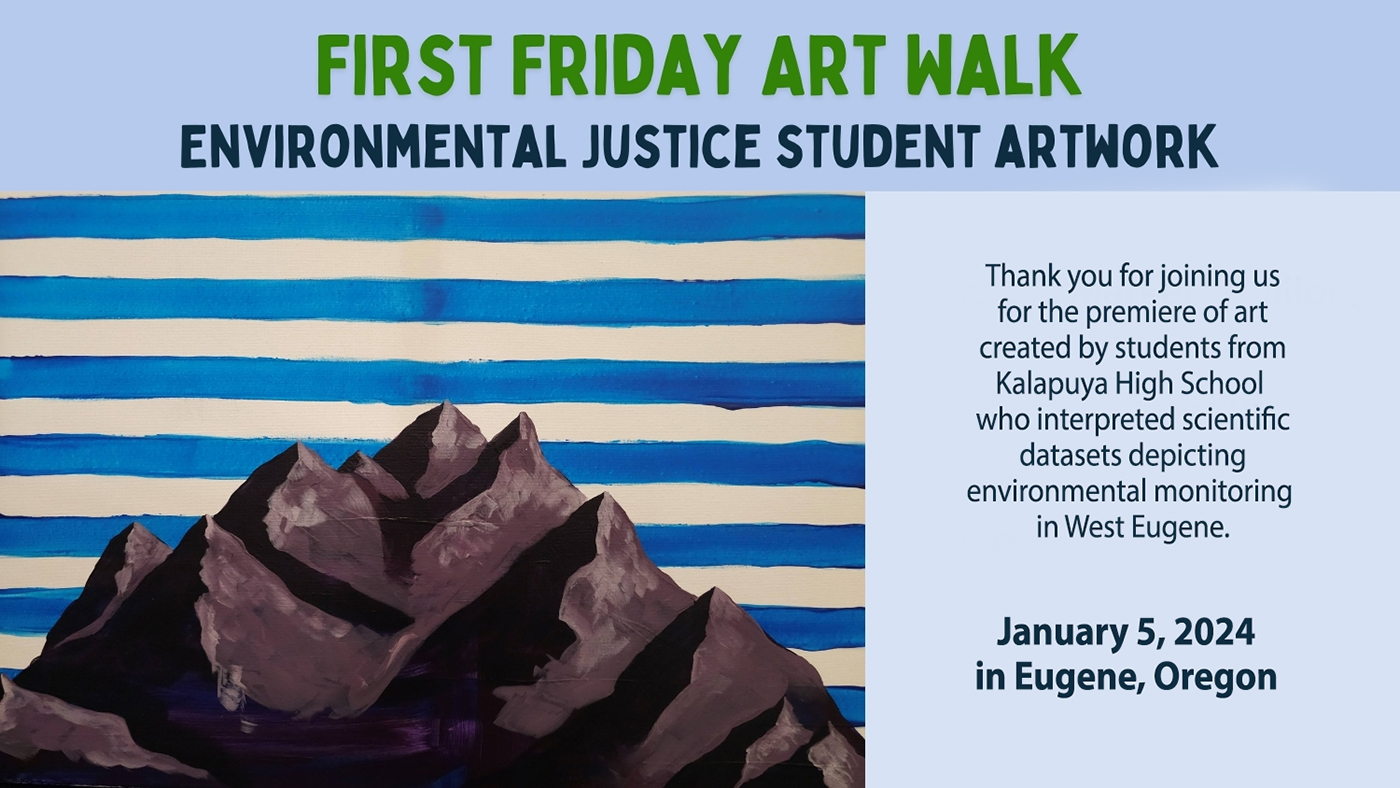
In a Kalapuya High School classroom the week before winter break, a group of students grappled with the issue of industrial pollutants in West Eugene. Creosote has been dumped in their community for almost a century, and residents have filed thousands of complaints about the nauseating odors and health issues that have defined living in this area. Years of community organizing and public pressure led to the closure of J.H. Baxter, a wood treatment processing facility and one of the major sources of pollutants in West Eugene, in 2022.
Students were asked to imagine potential pathways forward for their community, and began to explore what their role could be in enacting change. In order to bring awareness to the fact that West Eugene is disproportionately impacted by pollution, these high schoolers created abstract art inspired by different datasets that detail dimensions of environmental injustice in their community.
Below you will find the student’s creations as well as the datasets that inspired their work. It is their hope that these art pieces will inspire you to learn more about the heavy burden of pollution in West Eugene and what can be done in future to remediate these wounds.
Click on the names below to visit the correct part of the page directly:
Meztly Romero | Kalapuya Student | Taylor Peppers | Anonymous | Jesus Gonzalez | Sam Long | Ethan Edler | Indy Andres | Dana Hought
Artist: Meztly Romero
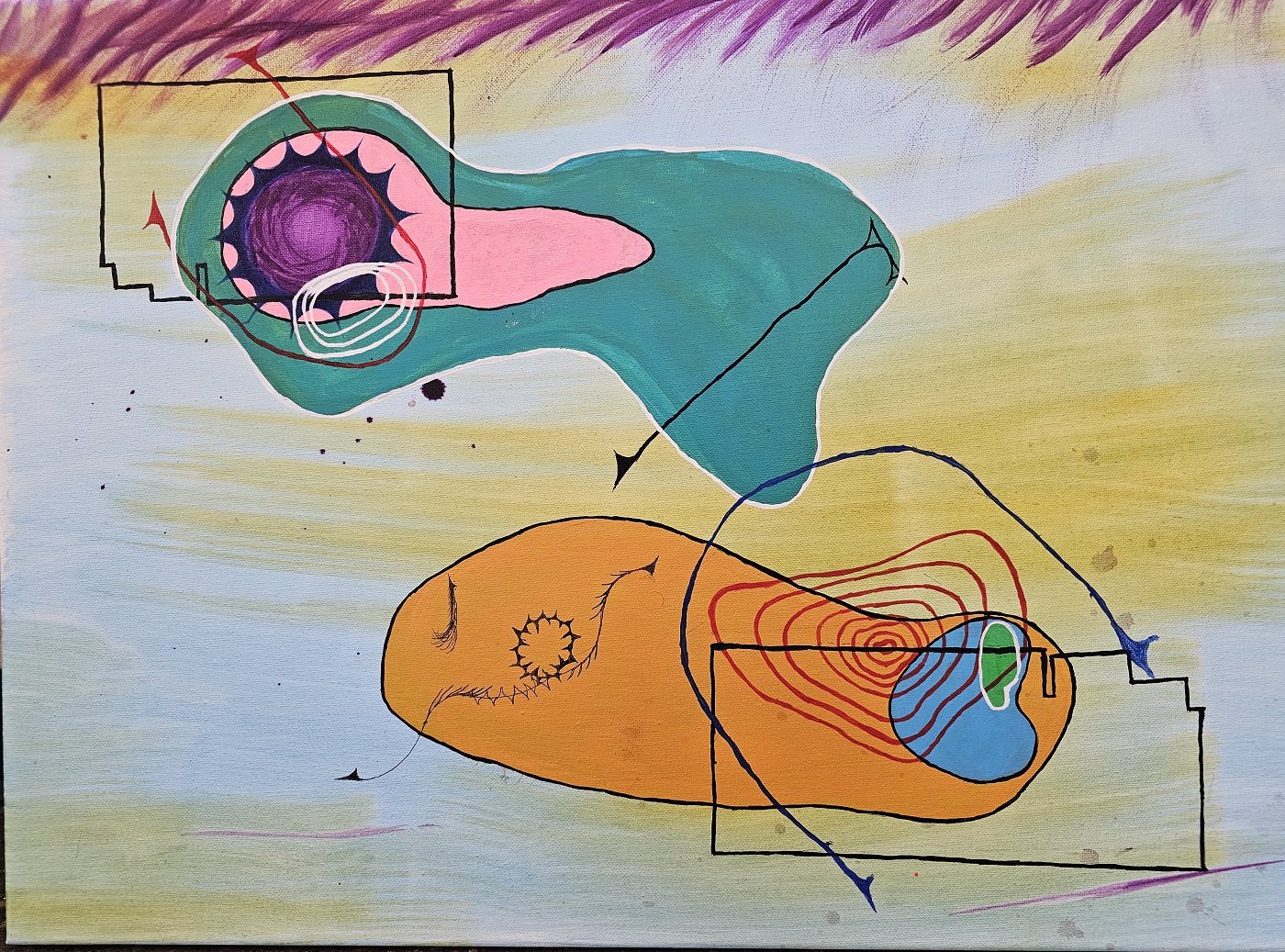
“I am positive that if my family and I were knowledgeable about the hazards in the Bethel Area, we would have not made the life altering decision of moving homes. Just this last year I was informed about J.H Baxter and their doings: this infuriated me but mainly left me in fear for myself, my family, friends and pets. I am making it my life's goal to use my voice for those who cannot speak or don’t know about the toxins affecting them to say; please help us. We are drowning in cancer-causing toxins that affect the thousands of west Eugene residents and animals in life altering ways. I have heard multiple stories from a wide range of people who express that they think they have been affected by J.H. Baxter toxic emissions, people who have gotten cancer and had to face chemo, people who break out in hives constantly every time they come to stay in the West Eugene Area. I have also personally experienced developing asthma after living in the west Eugene area for only 5 months, along with constantly feeling sick and “not knowing” why.”
Groundwater contamination from J.H. Baxter measured in 2001 extended beneath residential neighborhood. By 2015, pumping and treating of groundwater had reduced reach of plume.
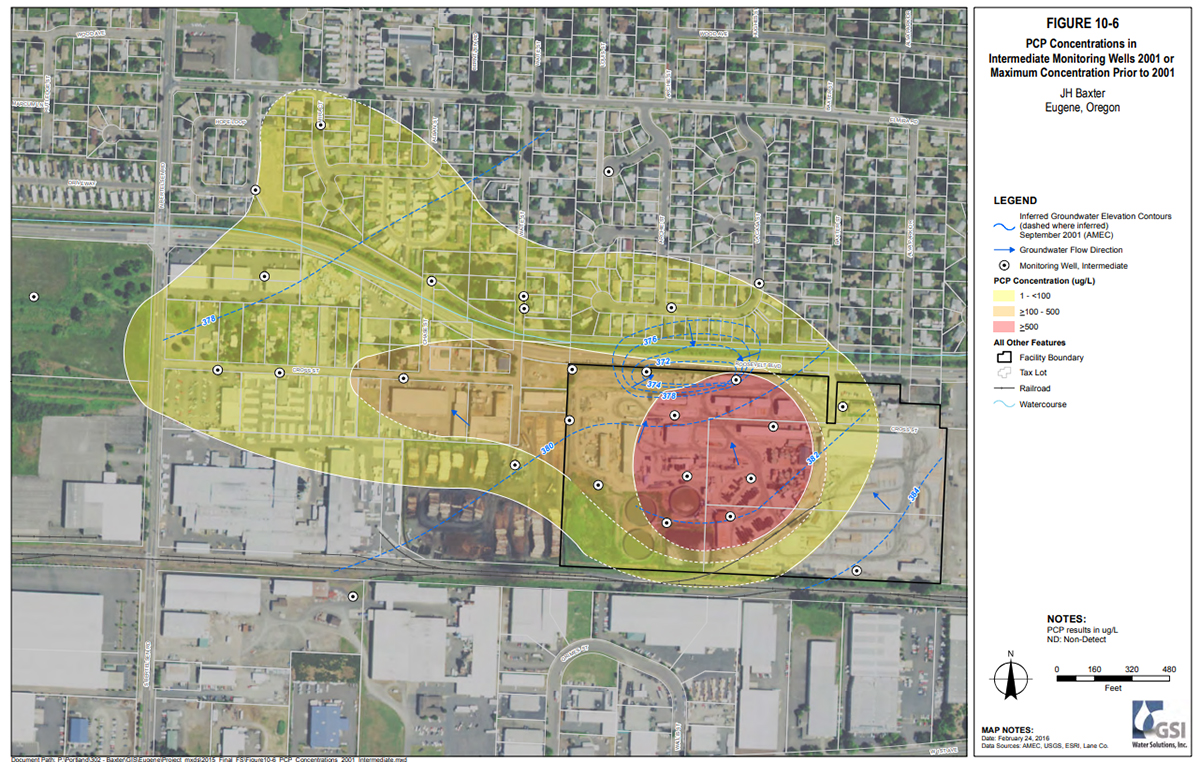
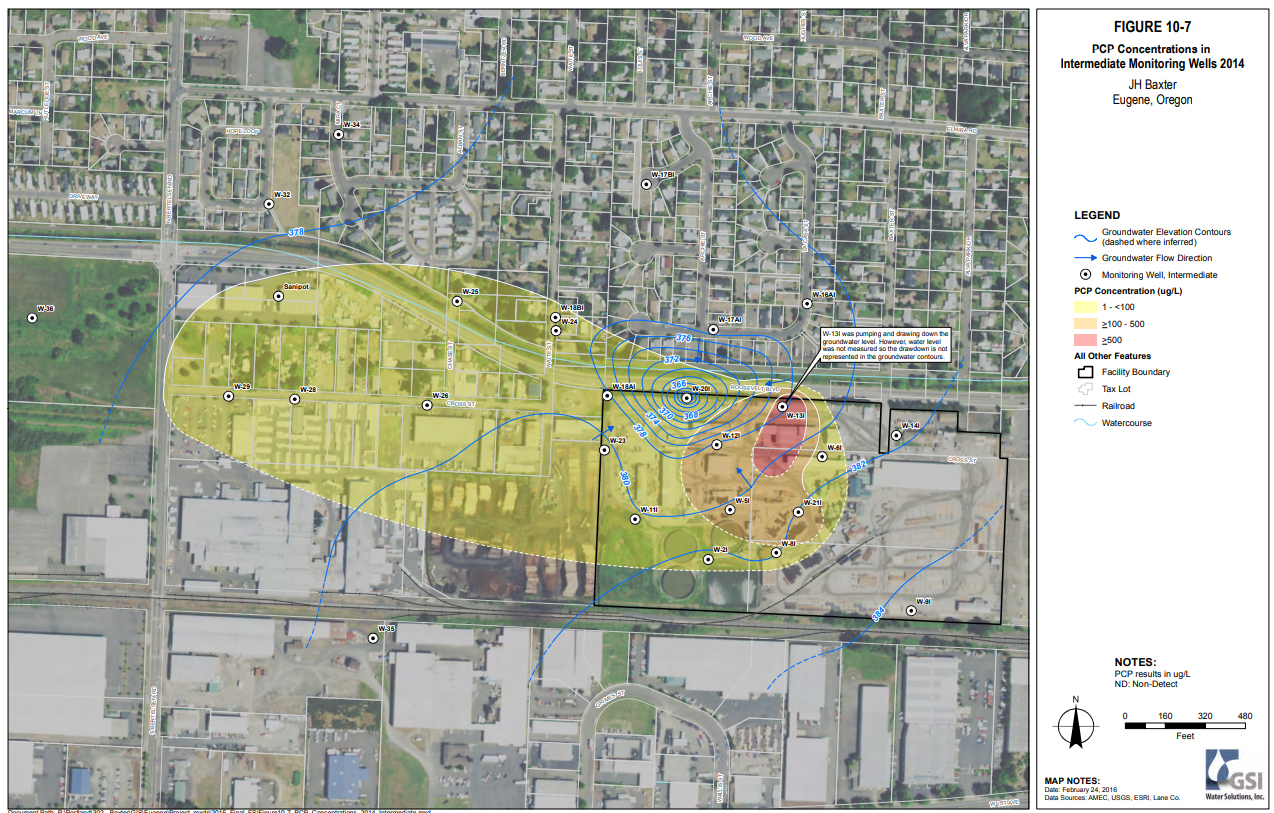
Artist: Kalapuya Student
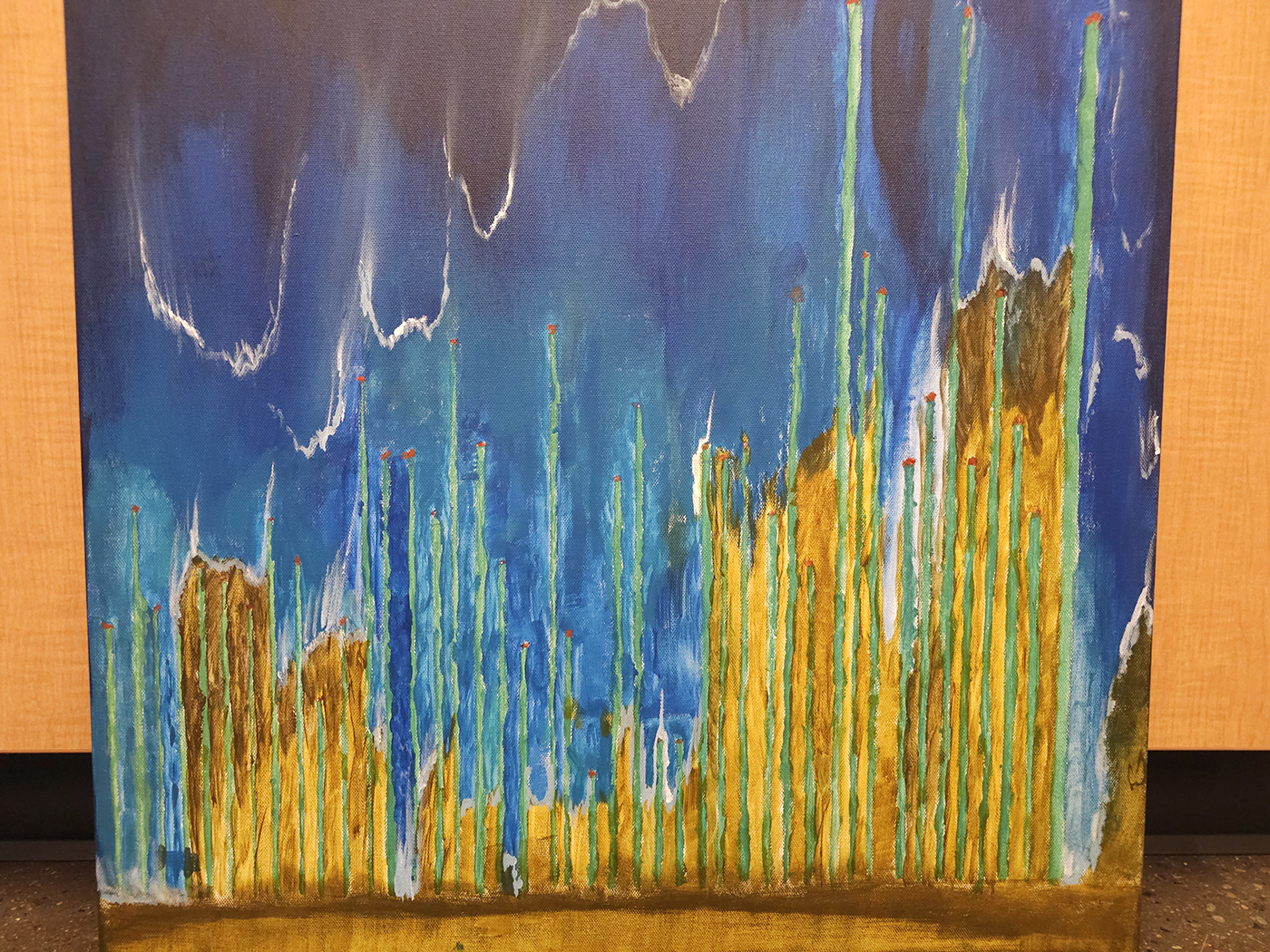
As a student in Bethel, the dataset that made the biggest impression on Kalapuya Student compared the rate of students with asthma in the 4J school district to the Bethel school district. Even though the student population in Bethel is a third of the size of 4J, they have almost double the amount of asthma prevalence, as indicated by the right side of Kalapuya Student’s art piece. He chose to contrast the harsh lines of the graph with the natural scenery of ocean waves, where the air is free from pollutants and you can take a deep breath of fresh air. He says “We’re isolated from those kinds of pleasant sceneries and good environments and actually healthy air, which is why I chose to paint ocean scenery.” Kalapuya Student is shocked by the prevalence of asthma in Bethel students and hopes his art piece will be an effective tool for spreading awareness.
Percent of schoolchildren with asthma
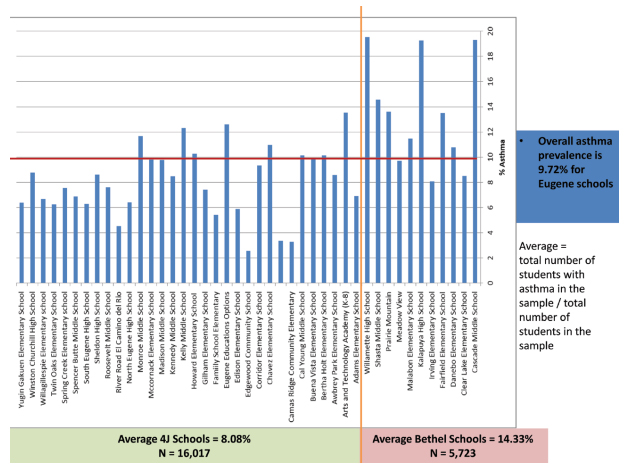
Source: Graph originally published in a Beyond Toxics report, "Environmental Justice in West Eugene: Families, Health and Air Pollution"
Bethel and Eugene 4-J School Districts
Artist: Taylor Peppers
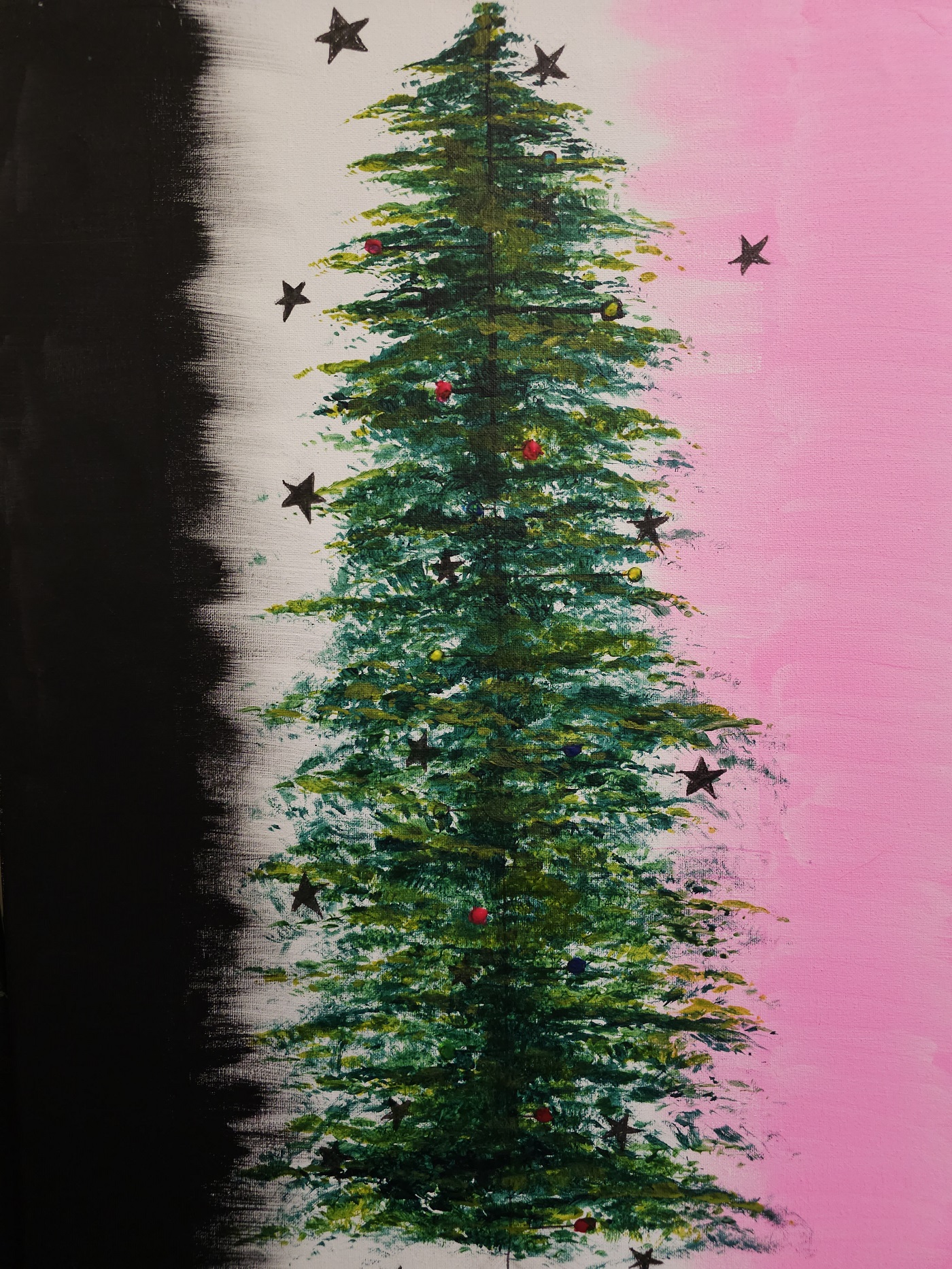
Taylor has lived in West Eugene their entire life, but first heard about the community’s heavy burden of pollution last year after the closure of Trainsong Park. The Oregon Department of Environmental Quality (DEQ) collected soil samples at seven sites away from the J.H. Baxter facility and found dioxin levels of 71 ppt at the park, the cause of which is still unknown.
Taylor based their artwork off a diagram that lays out the enforcement actions against J.H. Baxter over the course of 27 years. In 2020, the fines issued by five different public agencies totaled only $35,936. This student decided to use the branches of a pine tree to represent the spiking rates of these fines, many of which have still yet to be paid by Baxter Industries.
Details the enforcement actions taken by five different environmental agencies against J.H. Baxter between 1993-2020.
This is an estimate by Beyond Toxics based on regulatory agency records.
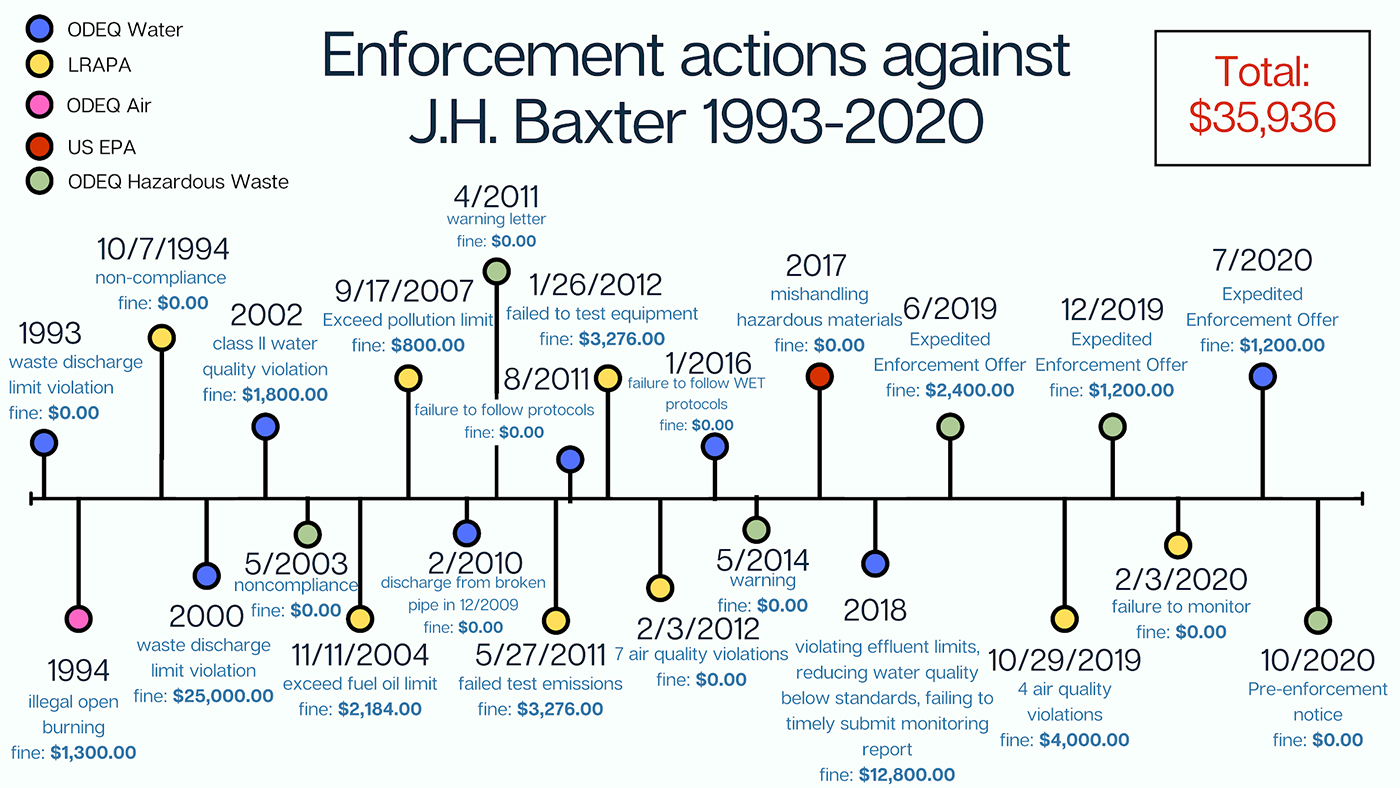
Source: Created by a Beyond Toxics intern.
To learn more: https://storymaps.arcgis.com/stories/61e11e3a99a54ff784a68ffacaccffcc
Artist: Anonymous

This piece depicts a vision for solar in West Eugene, at the shut-down JH Baxter site. The blue lines represent a solar array, and the peaks of the mountains correspond with data depicting potential solar production per month for the West Eugene community.
This graphic is a projection of energy savings over time if the solar array project was built out. Beyond Toxics is working with partners and Advanced Energy Systems to create a vision for a large solar array on the former J.H. Baxter Superfund site that could provide renewable power and other energy benefits for the Bethel neighborhood.
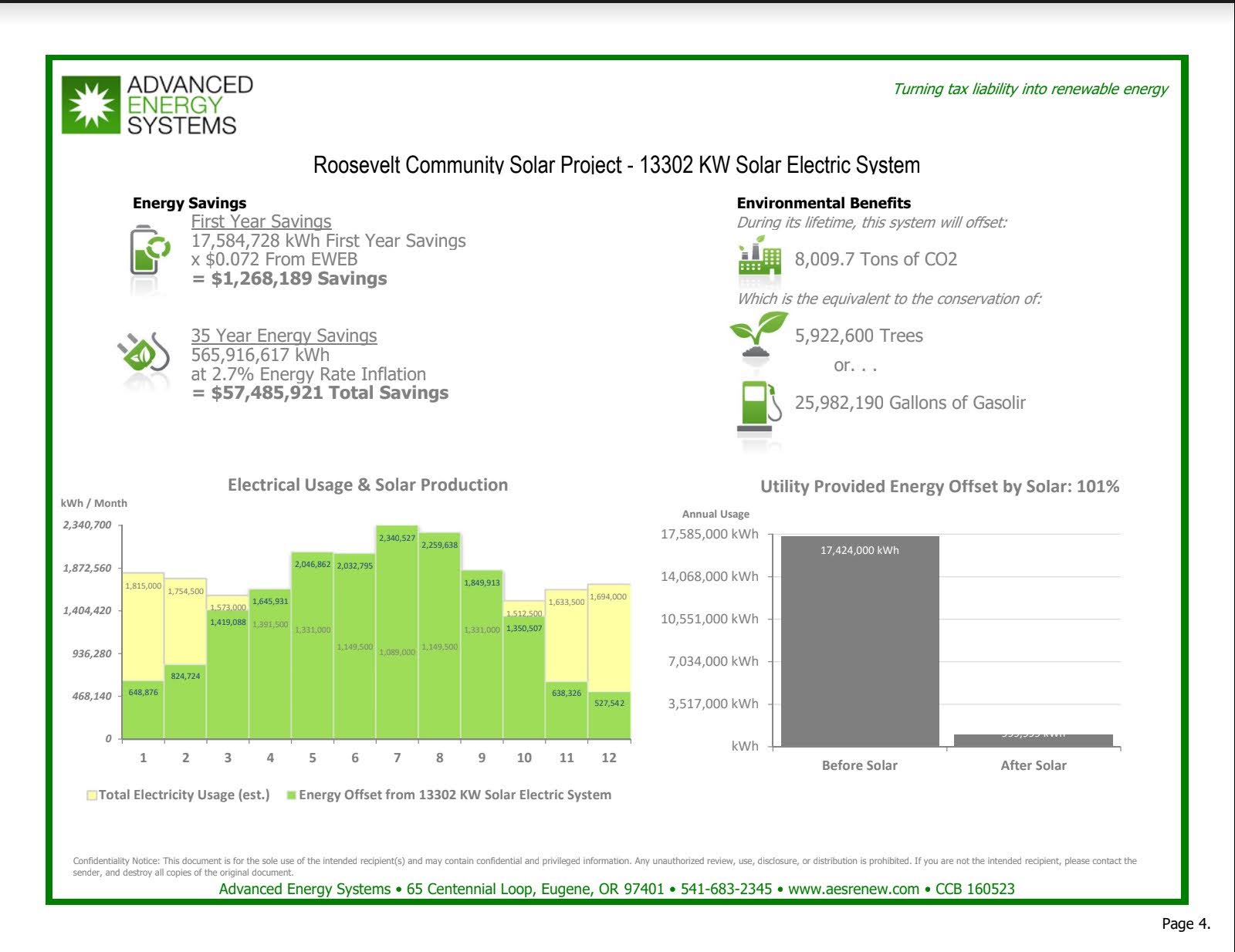
Artist: Jesus Gonzalez
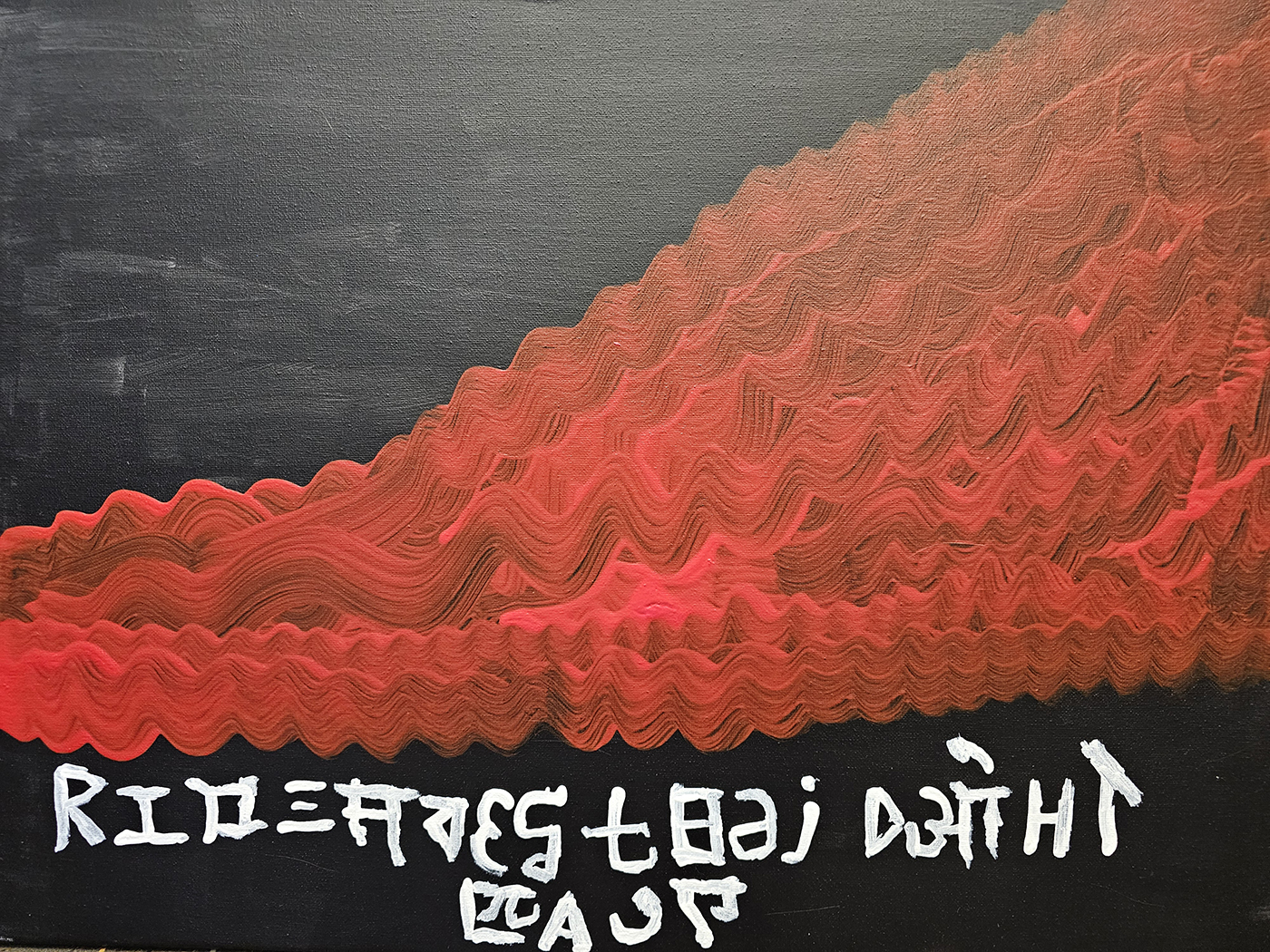
Jesus based his artwork on graph detailing the different air toxics most frequently released in Eugene during 2010. He emphasizes the fact that toxic air pollution is not unique to our area.
“My art piece is about the biggest pollutants around here. [Industries] throw bad stuff in the air we breathe, and they know about it but they just don’t really care. The letters are all from a different language because this isn’t the only place where stuff like this happens. It happens all over the place. I couldn’t pretend to be surprised.”
Jesus was not aware of the closure of J.H. Baxter, which he now realizes is about a 20 minute walk from his home. He hopes that people will look up the health effects of some of the toxic chemicals listed on the graph.
“This is my first time hearing about J.H. Baxter. It sucks cuz some people can’t grow stuff in their backyards… There’s kids that play around and they get sick just for stepping outside. That sucks.”
Top 3 Chemicals by Number of Industry Emitters*
Provides information about which air toxics are most frequently released into the air and the number of industries releasing those pollutants.
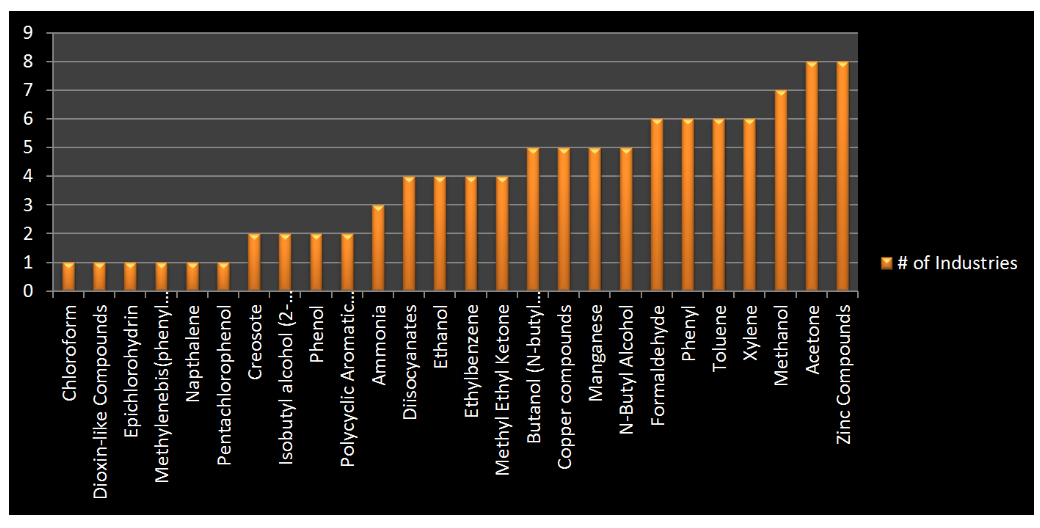
Source: Eugene Toxics Right to Know Report (2010-2011)
Artist: Ethan Edler
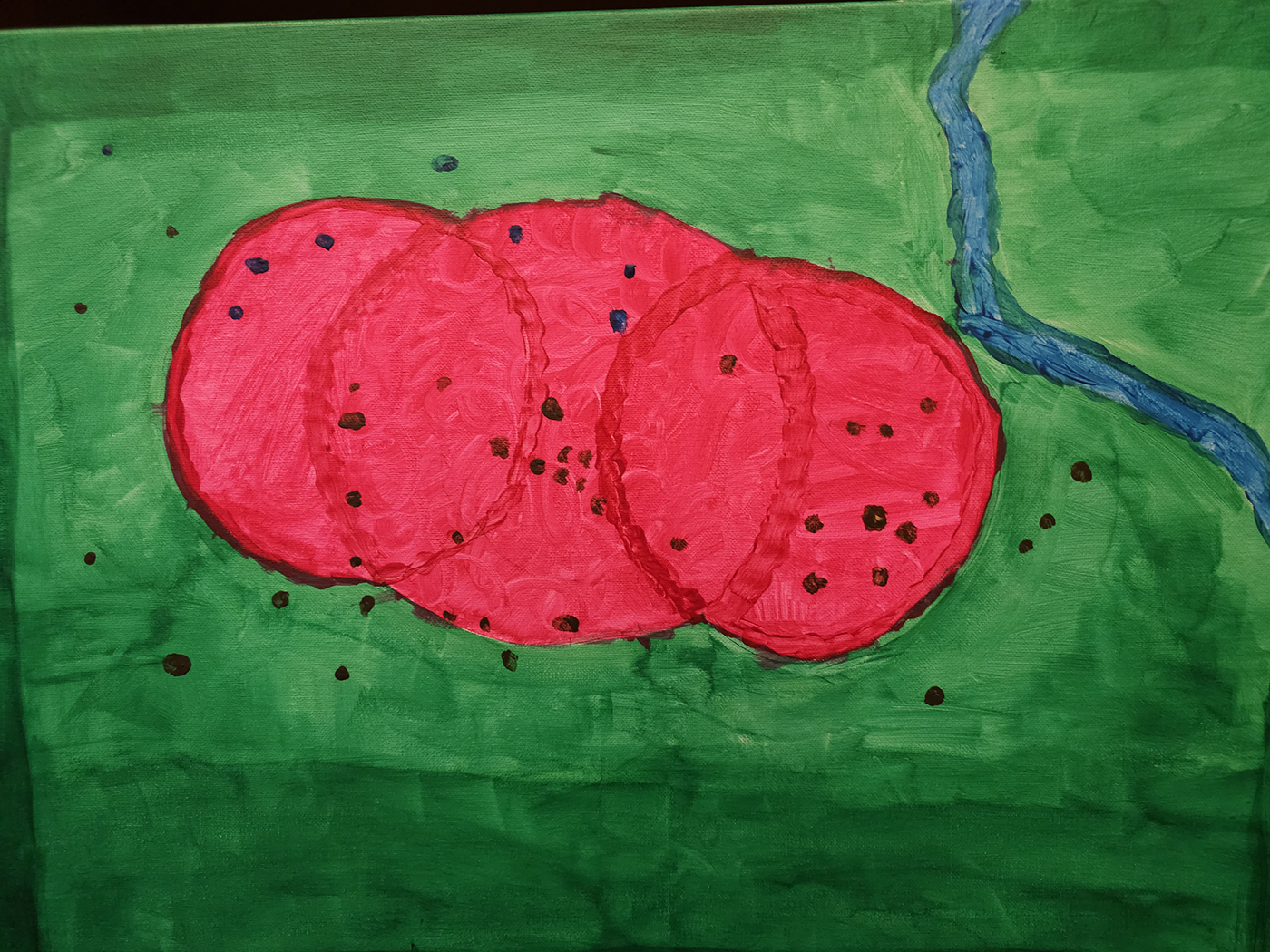
By a student at Kalapuya High School in West Eugene.
Cumulative air toxics exposures from Eugene industries as they potentially impact residential neighborhoods and schools.
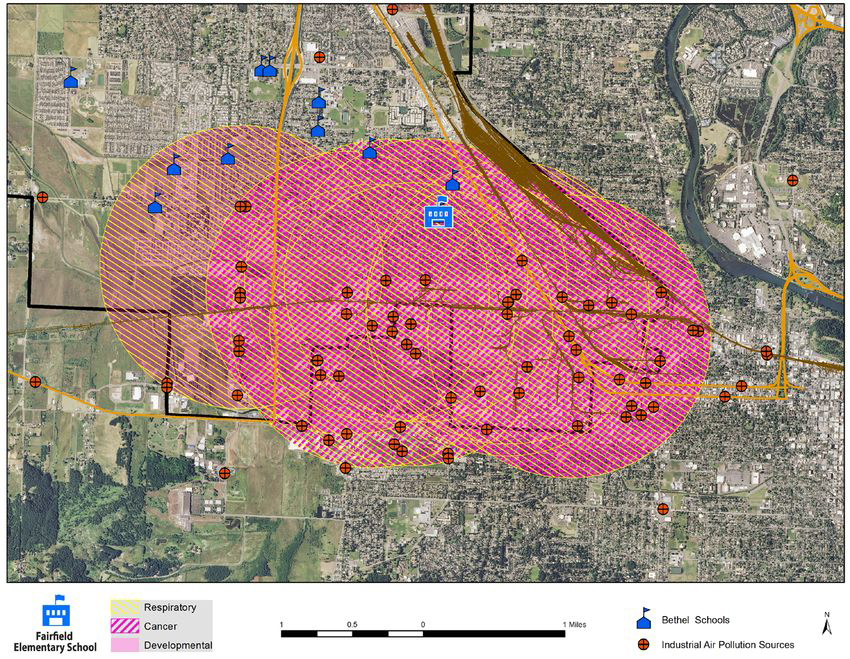
Source: Eugene Toxics Right to Know Report (2010-2011)
Artist: Indy Andres
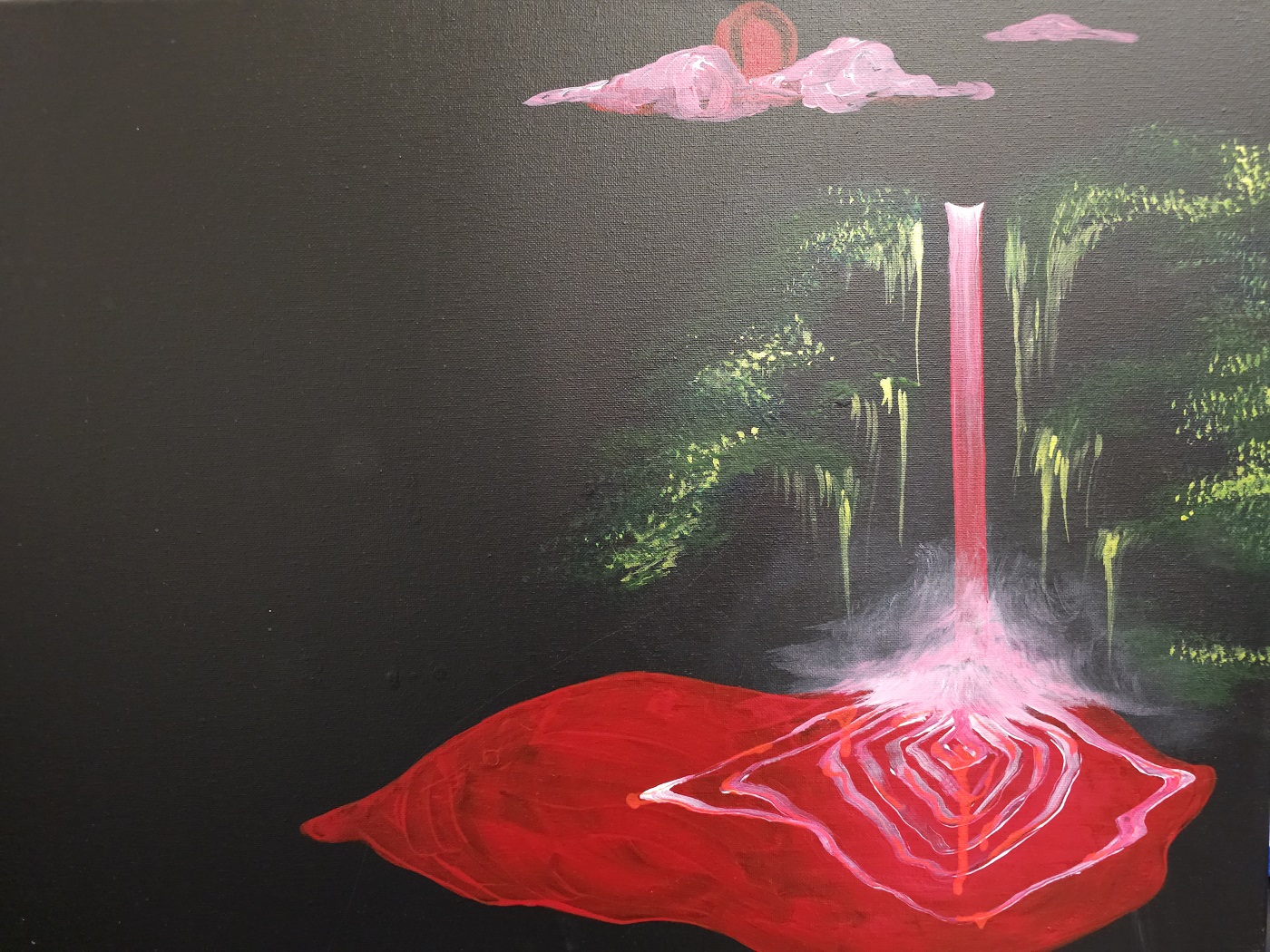
Groundwater contamination from JH Baxter measured in 2001 extended beneath residential neighborhood. By 2015, pumping and treating of groundwater had reduced reach of plume.


Artist: Dana Hought
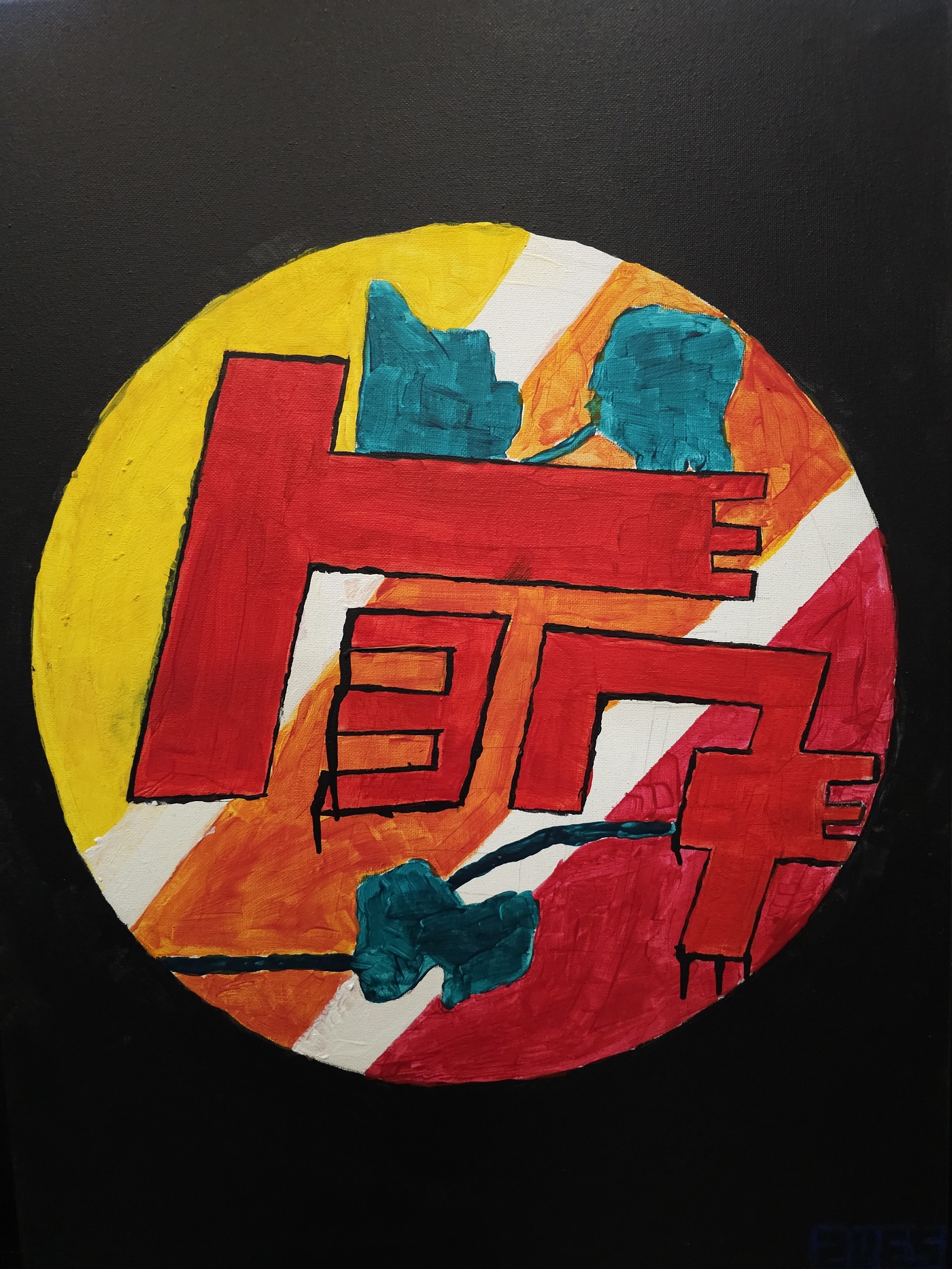
Dana feels very strongly that the city misses what the West Eugene community needs most. As someone who has generational ties to Golden Gardens ponds, he is sad that the city has chosen to put in a huge sports complex in its location, potentially damaging the fragile habitat. He is concerned that this plan will not strengthen community ties, but will rather bring mass crowds of commuting athletes from far away. His painting depicts the ponds in which many endangered species live, along with his passion for old cars. He hopes that everyone reading this will sign the petition to ensure that, at the least, the sports complex will not use artificial turf lawn, which contains microplastics that are detrimental to the critical pond habitat.
Please sign the Protect Golden Gardens Park online petition
